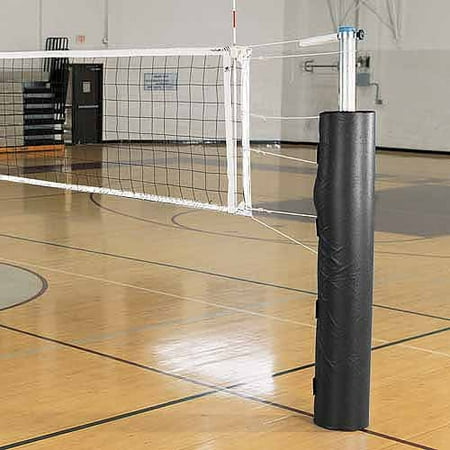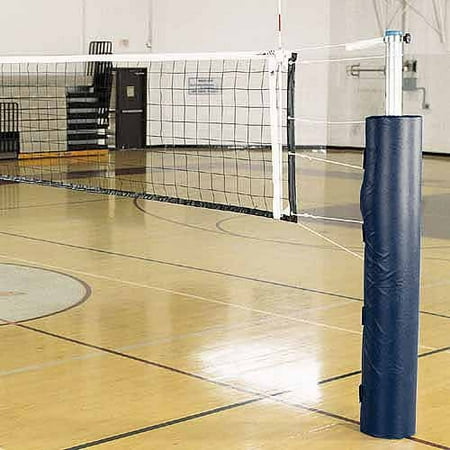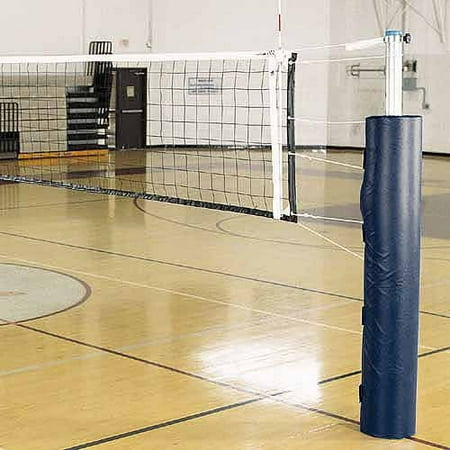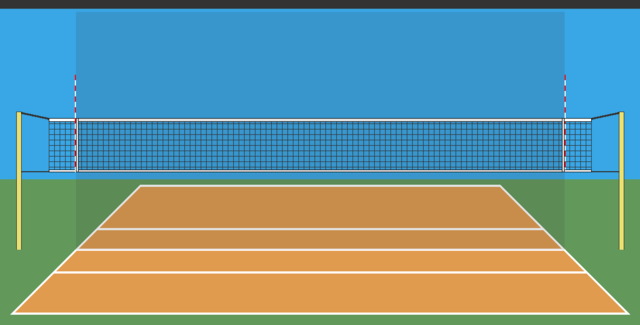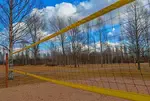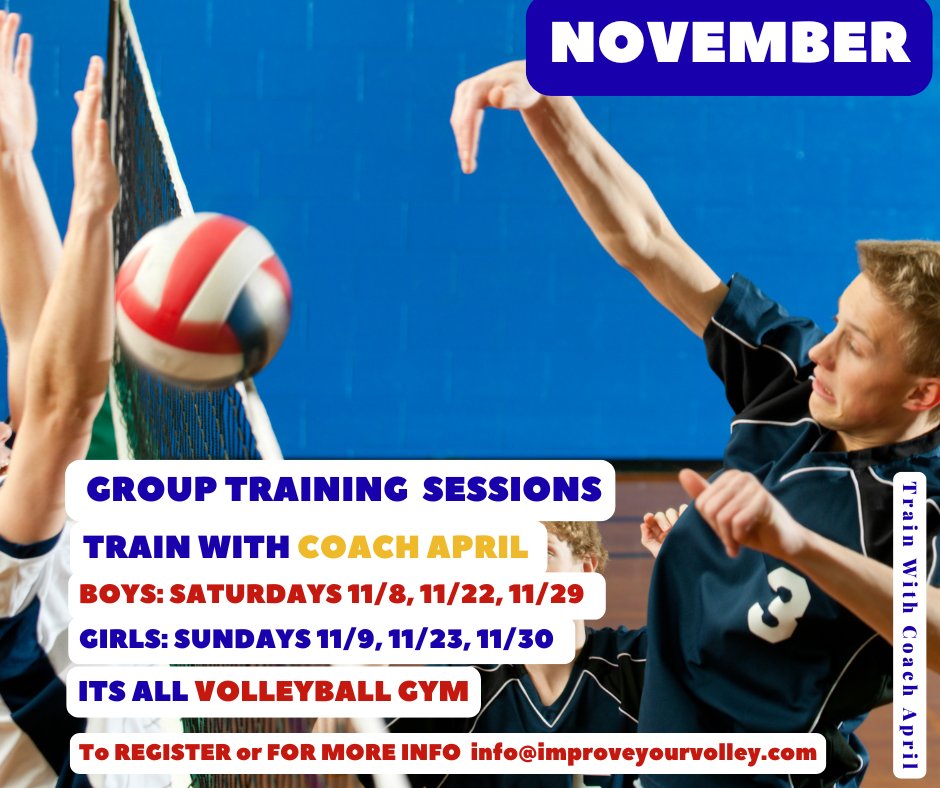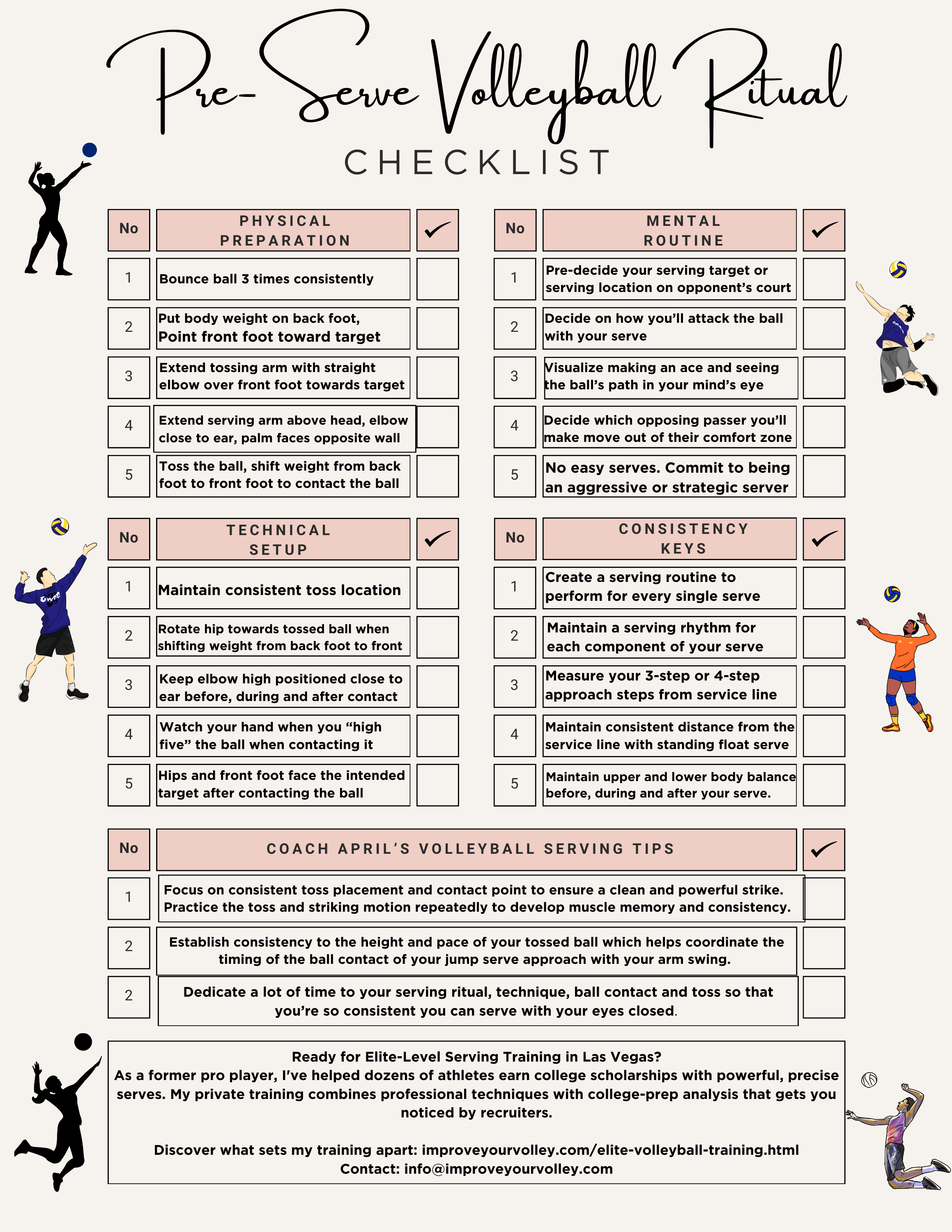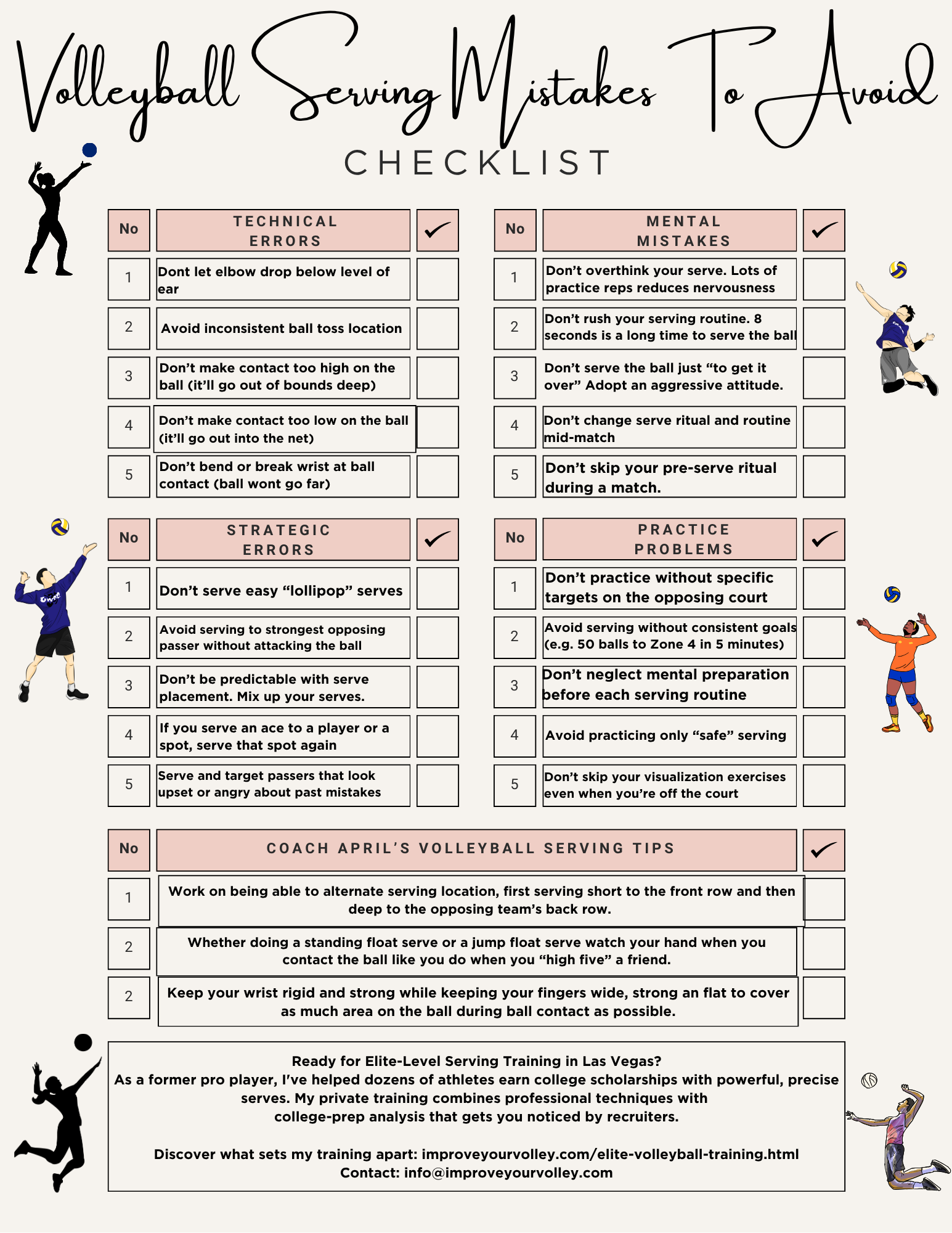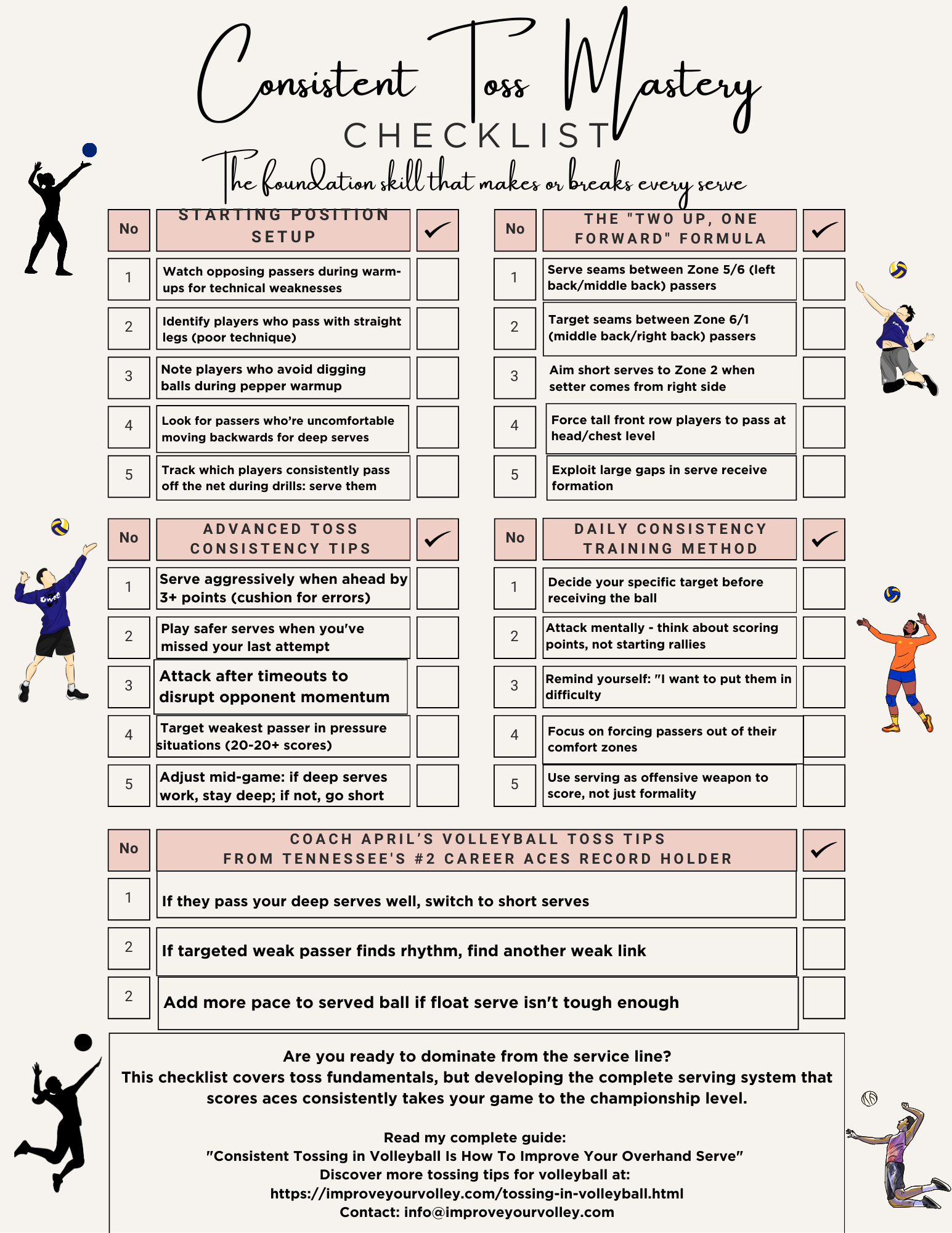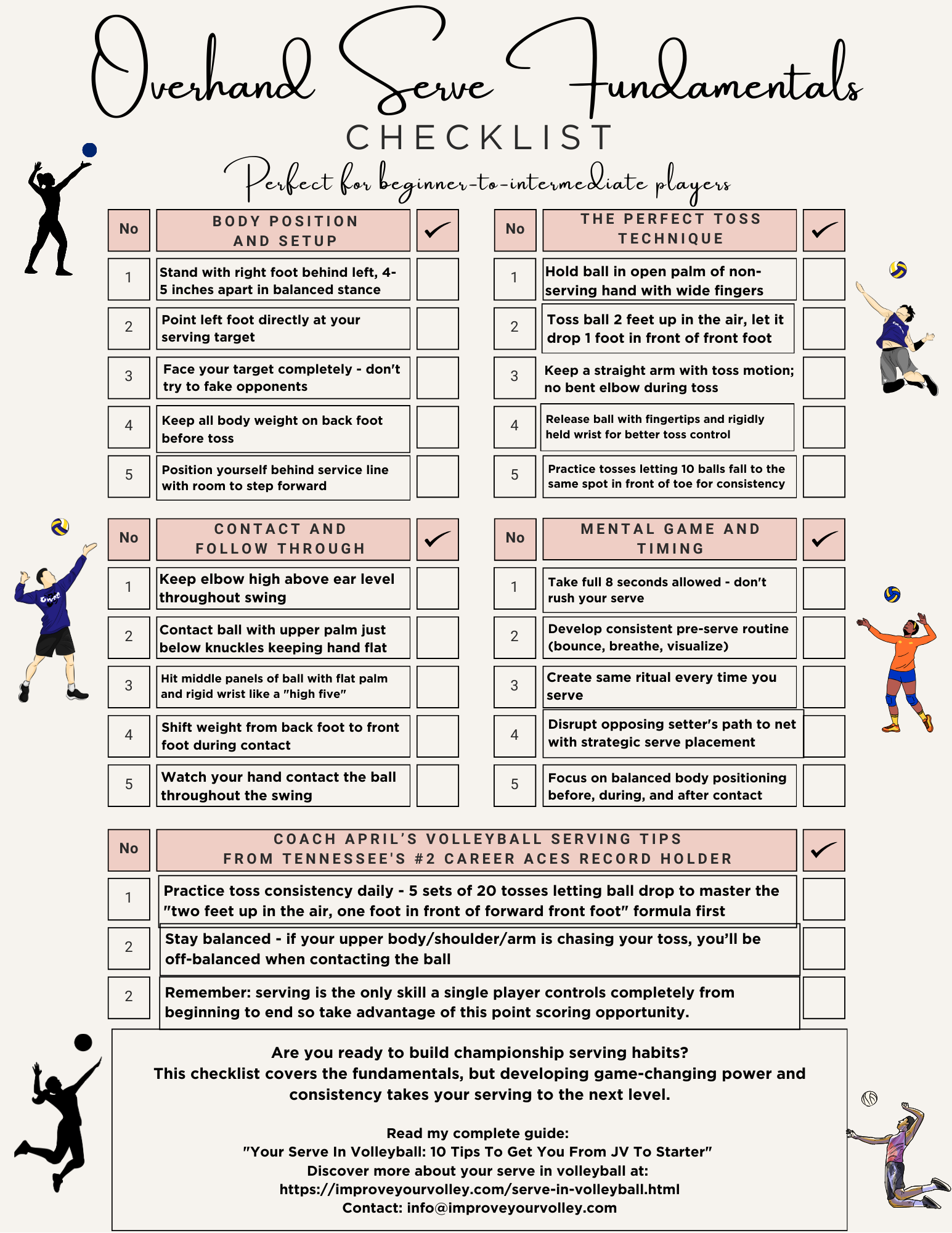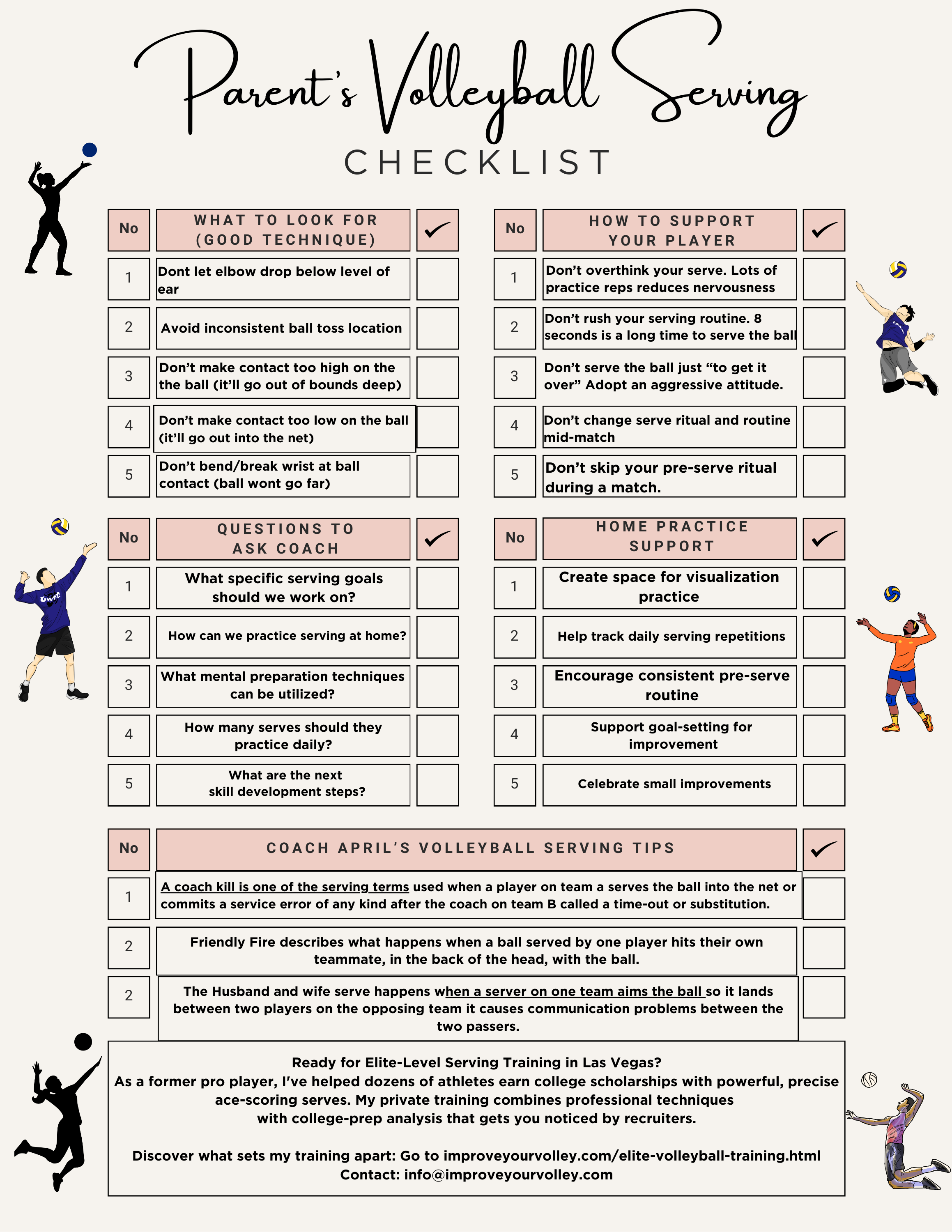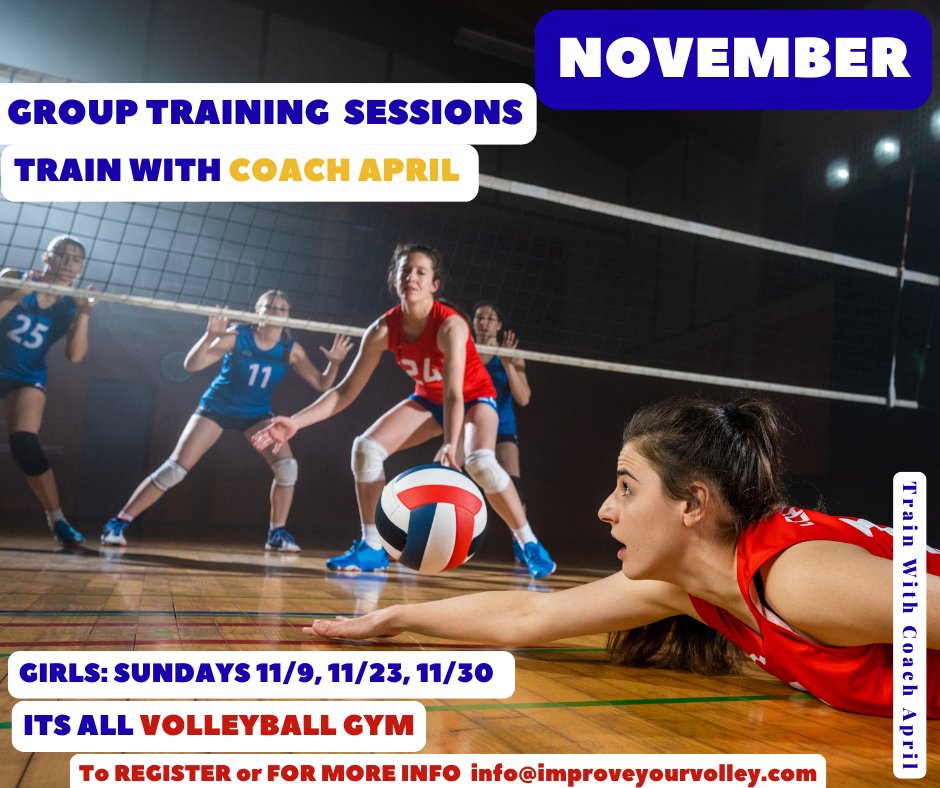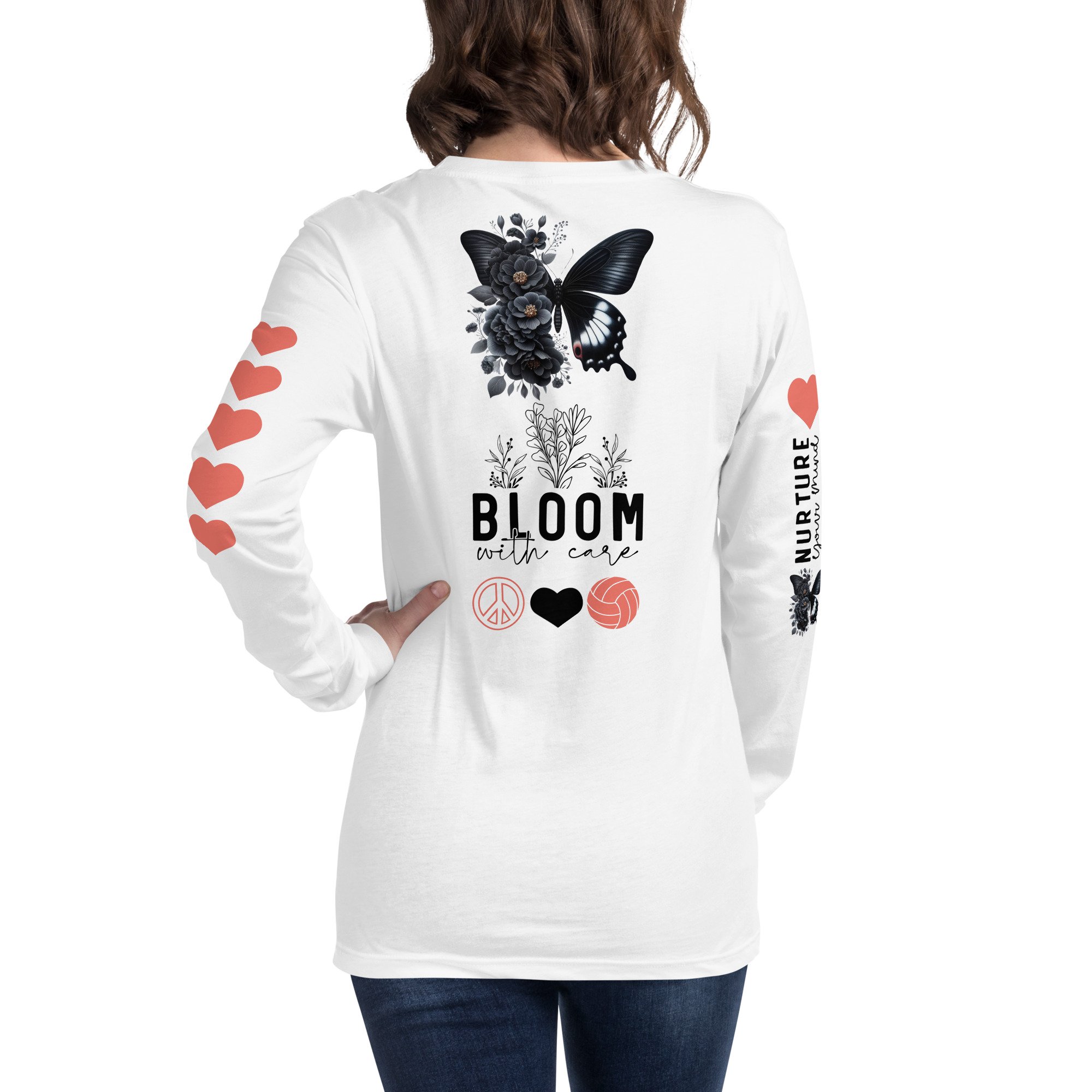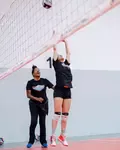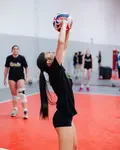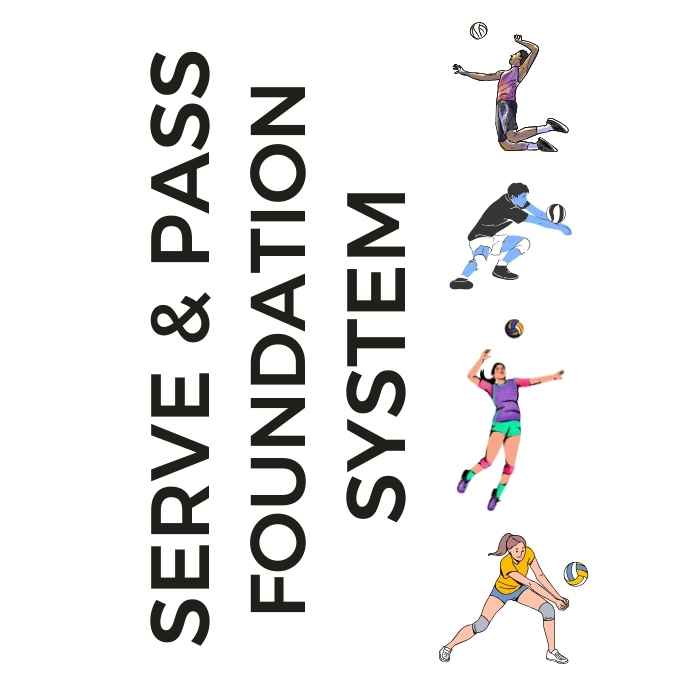
Serve + Pass Foundation System: The Complete Skills Arsenal The two-skill mastery system that transforms inconsistent players into the athletes coaches build their lineups around. Stop Struggling With The Two Most Important Skills In Volleyball!
The Net, What're The Characteristics of the Indoor Volleyball Net?
The net divides one half of a full court and it's what players serve, block or hit over for their team to earn a sideout or a point.
The indoor volleyball net is between two vertical poles that are connected to each other by fibers woven in a grid like 40-inch wide structure which separates two opposing teams during a volleyball match.
The net divides one half of a full court from the other and it's what players serve, block or hit over for their team to earn a sideout or a point.
The length of a net should be at least 30 feet and at maximum 31 feet, 6 inches long.
Definition of an Indoor Volleyball Net
One of the best definitions I know about a "net" reads like this:
"A (volleyball) net in this case is not a solid fabric but a woven structure that can be seen through and blocks the passage of large items, while simultaneously allowing the passage of small items, particles or fluids."
Of course in our case we are talking about the volleyball net separating two opposing teams from each other.
The net creates a vertical boundary in the middle of the court, that extends above the centerline all the way up to the ceiling.
Like other net sports, volleyball players are required to contact the ball so that it stays in play while it travels back and forth over the net.
Unlike some other net sports, if the ball contacts the indoor net it can still be kept in play in order to score a point or register a sideout.
Its quite common, and legal, to use a net sleeve on the top of the net.
This space on the net sleeve, usually 4 inches wide can be sold or used by event marketers as advertising space available for sponsorship purposes.
For example on the net sleeve below the Wilson Ball Company name has been used and will strategically appear in any volleyball court photography taken during this match.
Nice free advertising, right?
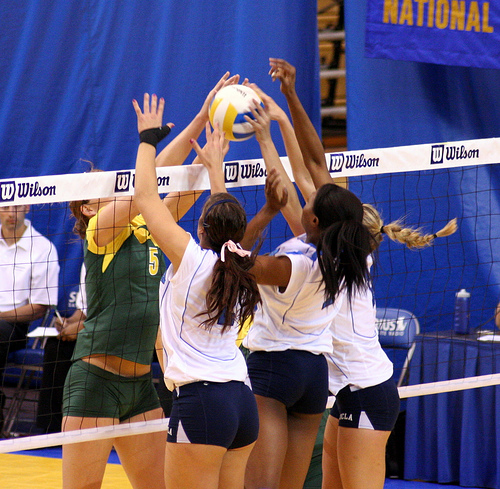 Like other net sports, volleyball players are required to contact the ball so that it stays in play while it travels back and forth over the net.
(photo JMR Photography)
Like other net sports, volleyball players are required to contact the ball so that it stays in play while it travels back and forth over the net.
(photo JMR Photography)How Is The Indoor Volleyball Net Constructed?
The net is typically made of high-quality fibers, such as nylon or polyester, woven together in a grid-like pattern.
These materials are chosen for their ability to withstand the impact of the ball and the constant tension applied to the net during matches.
Nylon is a popular choice for volleyball nets due to its exceptional durability and resistance to stretching and tearing.
It offers excellent tensile strength, allowing the net to withstand powerful spikes and robust play without compromising its integrity.
Moreover, nylon is known for its ability to maintain its shape and tension over time, ensuring a consistent and reliable playing experience throughout numerous matches.
Polyester is another common material used in the construction of volleyball nets.
It shares many of the same qualities as nylon, including strength, durability, and resistance to stretching.
Polyester nets display good resistance to harsh weather conditions and are often chosen for outdoor or beach volleyball where exposure to sun, wind, and moisture may occur.
The grid-like structure formed by the woven fibers provides both stability and visibility.
The open spaces between the fibers allow players and referees to clearly see the ball as it passes over the net, ensuring accurate calls and fair play.
The careful construction of the indoor volleyball net using durable materials like nylon or polyester ensures that it can withstand the demanding nature of the sport.
It offers players a reliable boundary to serve, block, and hit over, while also providing visibility and consistency throughout intense matches.
The net's robust construction is a testament to the sport's commitment to fair play, player safety, and the enjoyment of the game.
The Indoor Volleyball
Net Height
For those who use the metric system, that's 2.43 meters.
- The indoor net height for women in the traditional six on six game is officially 7 feet four 4 1/8 inches. In meters that reads, 2.24m.
- For nine person volleyball, played dominantly in Asian cultures and communities the court is larger and the indoor net height, is lower at 243 cm.
Frequently Asked Questions about the Indoor Volleyball Net
Q: What is the height of an indoor volleyball net?
A: The standard height of an indoor volleyball net is 7 feet 4 1/8 inches (2.24 meters) for women's volleyball and 7 feet 11 5/8 inches (2.43 meters) for men's volleyball.
Q: How is the net attached to the poles in indoor volleyball?
A: The volleyball net is typically attached to sturdy vertical poles using a combination of tension cables, hooks, and clips. The net is secured tightly to maintain the correct height and tension during play.
Q: What is the width of an indoor volleyball net?
A: The width of an indoor volleyball net is 39 inches (1 meter). This ensures that the net covers the entire width of the court, providing a barrier for players to play over.
Q: Are there any specific rules for the net tension in indoor volleyball?
A: Yes, the net tension is an important factor in indoor volleyball. The net should be taut and have the correct tension so that it remains stable during play. The tension is regulated by tightening or loosening the cables or straps on the poles to achieve the desired tightness.
Q: Can the net height be adjusted during a game?
A: No, once the net height is set at the beginning of the game, it should remain unchanged throughout the match, unless there is a specific reason for adjustment, such as a technical issue or equipment failure.
Q: What material is the indoor volleyball net made of?
A: Indoor volleyball nets are typically made of durable and strong materials such as polyester or nylon. These materials provide the necessary strength and flexibility to withstand the impact of the ball during gameplay.
Q: Are there any specific regulations regarding the visibility of the net in indoor volleyball?
A: Yes, the net should provide good visibility for the players and officials. The mesh of the net should have a consistent color and be easy to see through, allowing players to track the ball and referees to make accurate calls.
Q: Can the net touch the floor during gameplay in indoor volleyball?
A: No, the net should not touch the floor during gameplay in indoor volleyball. The net should be properly tensioned and positioned at the correct height, allowing the ball to pass above it without interference.
Q: What is the purpose of the antennae on an indoor volleyball net?
A: The antennae are slender fiberglass or metal rods that extend vertically from each side of the net. They serve as an extension of the net's top boundary, helping to determine whether a ball has passed inside or outside the antennas. The ball must travel between or over the antennas to be considered in play.
Q: Is the top tape of the indoor volleyball net important?
A: Yes, the top tape, also known as the canvas or band, is an essential part of the net construction. It provides stability and helps maintain the proper shape and tension of the net. The top tape ensures that the net remains in its intended position throughout the game and helps prevent any sagging or distortion.
Q: Are there any specific rules regarding the color of the indoor volleyball net?
A: While there are no specific regulations concerning the color of the indoor volleyball net, it is typically black or dark-colored. This choice is made to enhance visibility for players, allowing them to see the ball clearly against the contrasting color of the net. However, some variations may exist based on different leagues or tournaments.
Remember, if you have any specific questions or need further clarification about the indoor volleyball net, feel free to ask!
Do You Follow Me on Pinterest?
 Private or semiprivate volleyball indoor/sand lessons are an excellent way for young Las Vegas high school volleyball players to quickly improve their individual skills through a private or semi-private coaching experience.
These lessons are conducted by former pro volleyball player, former USA Volleyball High Performance instructor and Evaluator and Tstreet Vegas 18s head Coach April Chapple on a weekly basis.
Sign up now!
Private or semiprivate volleyball indoor/sand lessons are an excellent way for young Las Vegas high school volleyball players to quickly improve their individual skills through a private or semi-private coaching experience.
These lessons are conducted by former pro volleyball player, former USA Volleyball High Performance instructor and Evaluator and Tstreet Vegas 18s head Coach April Chapple on a weekly basis.
Sign up now!Follow me on Pinterest Volleybragswag to improve your game even faster!
I share alot of individual, partner and easy-to-do volleyball serving drills we do in class with my followers.
Many of these volleyball practice drills you can do at home by yourself or try at your next practice with your teammates.
If you're a B team or JV player trying to make varsity next year...your goal should be to complete 1000 reps a day of at least three of the basic skills on your own...volleyball passing, serving and setting should be at the top of the list.
Volleyball Court Size:
Where Do You Go From Here?
What should you read next? Here are three options:
- Learn more about the Net.
- Follow the suggested reading on our Sitemap page Learning How To Play (Sitemap)
- Or visit the pages in the Volleyball Rules section in the drop down menu at the top of the page.
If your athlete struggles with consistent serve receive, gets subbed out, or is overlooked for playing time—this is the fix you’ve been looking for.

Struggling with passing consistency?
I help talented passers tired of getting pulled from games because of inconsistent serve receive skills BUILD passing confidence without expensive private lessons using the same 3-step system that's helped dozens of my athletes get recruited.
Download my eBook for $17.99 and start building the passing confidence that keeps you on the court—and gets you seen by college coaches.
From Lady Vol to Legend: Coach April Produces Powerful Passionate Players...is that you?
What Are You Looking For?
Click to Download Your Pre Serving Ritual Mastery Checklist pdf:
🎯Volleyball Pre Serving Ritual Guide -
Players! Learn How To Transform Your Serve from Weak to Weapon
Click to Download Your Parent's Volleyball Serving Checklist pdf
🎯Parent's Volleyball Serving Checklist Guide
Parents! Help Your Player Develop Championship Serves (Even If You've Never Played)

Hi there!
Thanks for stopping by. Hope you learned something today that will help you reach your volleyball goals.
Be sure to subscribe to my email newsletter so you can learn more each week!
Stay strong! Stay motivated!
-Coach April

SUSCRIBE to my email newsletter below!
 Click to learn more about the weekly volleyball classes and clinics or email info@imrpoveyourvolley.com for information
Click to learn more about the weekly volleyball classes and clinics or email info@imrpoveyourvolley.com for informationCongratulations to my seven Boys-18s Vegas Volley club players who played in two state championship finals yesterday, the 3A and 5A State champinship finals at Sunrise Mountain High School.
TOURNAMENT CHAMPIONS!
A-1 Vegas Volley VBC
In It To Win It Tournament
May 2 - 4, 2025 Tournament
Gold Medalists
18s Premier Division
Vegas Volleyball's Unsung Heroes: Celebrating Moms with Peace Love Volleyball Shirts
Ready to energize your volleyball mom journey?
Subscribe to my 'Producing Powerful Passionate Peaceful Players' email list above on ImproveYourVolley.com.
You'll receive energy-boosting tips, exclusive insights from me, Coach April Chapple on maintaining momentum in volleyball.
Let's power up the Vegas volleyball scene together!
Recent Articles
-
6 Volleyball Setting Checklists For Players With College Prep Goals
Dec 24, 25 06:18 PM
6 volleyball setting checklists that build elite setters. Master hand positioning, footwork, set types, back setting & jump setting. Includes at-home drills. -
The Volleyball Checklist: Skill Development Systems That Get Results
Dec 24, 25 02:22 AM
Master serving, passing and other basic skills with a step-by-step volleyball checklist from a Tennessee Hall of Famer who trains college-recruited athletes. -
How To Set A Volleyball A Basic Setter Guide To Good Setting Technique
Dec 24, 25 02:07 AM
Want to be a good volleyball setter? I show you how to set a volleyball the way I teach my club players, focusing on hand and body placement and ball contact.
Bestselling
Volleyball Nets
on Sale!
